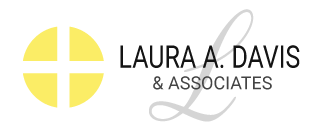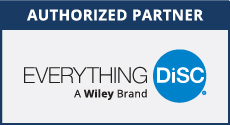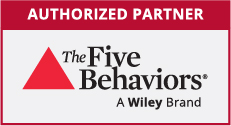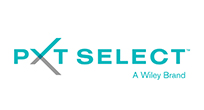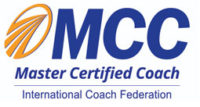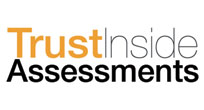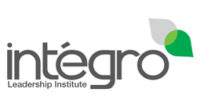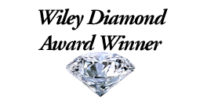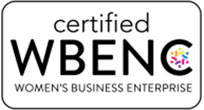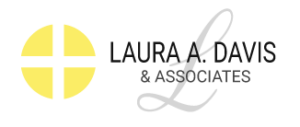Leadership Development
“Leadership is lifting a person’s vision to higher sights, the raising of a person’s performance to a higher standard,
the building of a personality beyond its normal limitations…(in short), management is doing things right, leadership is doing the right things.”
— Peter Drucker —
In any  successful organization, leaders can be found at every level – from the boardroom to the mail room, from the chairman’s office to the customer service desk. This is particularly true in organizations that have moved away from hierarchical structures to more matrixed organizational structures. In the 21st century, team-oriented approaches to leadership and management will prove to be more effective than traditional top-down approaches.
successful organization, leaders can be found at every level – from the boardroom to the mail room, from the chairman’s office to the customer service desk. This is particularly true in organizations that have moved away from hierarchical structures to more matrixed organizational structures. In the 21st century, team-oriented approaches to leadership and management will prove to be more effective than traditional top-down approaches.
Whether you and your organization are developing future leaders who may or may not have direct reports, or advancing key individuals along leadership succession plans, we can assist you in building leadership competency one leader at a time. In addition to leadership needs based upon the situation, leaders display differing leadership characteristics or “dimensions of leadership.”
A follower can become a leader and a leader can spend time as a follower. Some of the tools you can use to strengthen your leadership bench-strength are: the Everything DiSC Workplace®, the Everything DiSC® Management, the Everything DiSC Work of Leaders®, as well as The Five Behaviors® and PXT Select™. These assessment tools can assist learners in:
- Discovering personal leadership style strengths and areas for growth
- Encouraging acceptance of different approaches to leadership
- Matching leadership approaches to organizational needs
- Recognizing the strengths in shared leadership
We provide interactive, experiential training modules designed to educate leaders at every level to:
- Communicate and Collaborate More Effectively
- Give and Receive Feedback
- Encourage Productive Conflict
- Create High-Performing, Cohesive Teams
- Leverage Your Leadership and Communication Style
- Transform Your Leadership Capability
All leadership training strikes a balance between understanding and self-knowledge and awareness and skill development. Self-mastery and skill go hand in hand. Leaders must know how to facilitate group processes and minimize interpersonal conflict while encouraging productive conflict, listening and communicating effectively as well as aligning with organizational goals.
Some of the tools used to do this include training on Everything DiSC® and The Five Behaviors®.
To review, the acronym DiSC stands for four observable personality styles: Dominance, Influence, Steadiness, and Conscientiousness. People with similar styles tend to exhibit specific behavioral characteristics common to that style. All people share these four styles in varying degrees of intensity and can learn to self-manage their expressed style according to the needs of the situation and the people involved.
Using these families of assessment tools can assist you in creating a more positive organizational culture. An understanding of the Everything DiSC® as well as The Five Behaviors® Application Suite helps you create a positive, learning organization by:
- Reducing employee turnover by improving interpersonal relationships
- Increasing employee engagement through better interpersonal relationships and communication
- Teaching and reinforcing a shared language to describe behavior and motivation that is respectful, non-evaluative, and non- judgmental
- Encouraging mutual respect and connection between people who are different thus facilitating a diverse and inclusive workplace culture
- Easing unproductive conflict by helping employees develop trust and teamwork through compassion for individual differences in perception and behavior
Team Effectiveness
“Never doubt that a small group of thoughtful committed people can change the world; indeed it is the only thing that ever has.”
— Margaret Mead —
 Progressive businesses in the 21st century are merging into networks of self-directed units, teams, or work centers. Self-directed teams empower individuals as shared leadership exists. For the team to function well, team members must share what they know, have, and feel. Self-directed work teams also support the effectiveness of corporate leaders who now have greater demands on their time than in the past.
Progressive businesses in the 21st century are merging into networks of self-directed units, teams, or work centers. Self-directed teams empower individuals as shared leadership exists. For the team to function well, team members must share what they know, have, and feel. Self-directed work teams also support the effectiveness of corporate leaders who now have greater demands on their time than in the past.
For decades (even centuries) governmental, business, family, religious, and educational institutions have been (and still are) based and organized upon bureaucratic models and outdated paradigms. The people at the top collect as much power as possible and delegate it back down to a controlled system through the “organization” chart. This is the model many of us have been programmed to accept and respect.
This model is no longer effective in today’s world as is evidenced by the state of businesses still trying to hold to outdated hierarchies and paradigms. A bureaucratic, hierarchical organization is ill-equipped to change strategic direction easily and cannot be agile enough to respond to changing customer needs as rapidly. Research shows that a more agile, team-based organization where team networking, connecting, and relating are encouraged, supported, and rewarded is more profitable and successful in the long run. Trends in technology and globalization continue to reinforce this shift to a more relationally-based power. Enlightened leaders know that power in organizations is the capacity generated by relationships.
We can design training and coaching programs for you to replace bureaucracy, hierarchy, and control with intuition, creativity, innovation, uniqueness, shared values, shared leadership, and flexibility to create needed change.
Successful team leaders apply situational decision-making. They know when a decision is to be made by team consensus; or by the team leader alone; or by team input but leader decision; or by one or two team members alone. While team members work together towards a common goal, individuals still must play their separate parts in the process. As organizations rely more and more on teams to innovate, find solutions, and produce at the speed of change, understanding and capitalizing on individual approaches to group processes is the bottom-line to creating high-performance teams.
To learn more CLICK HERE…
The Team Dimensions Profile® helps individuals work from their strengths by identifying their most natural team role. The five roles are Creator, Advancer, Refiner, Executor, and Flexer. The profile also maps the flow of assigning roles, completing tasks, and handing off tasks to other team members through the Z Process.
The  Team Dimensions Profile® is a transformational tool to help individuals and teams in your organization:
Team Dimensions Profile® is a transformational tool to help individuals and teams in your organization:
- Identify individual approaches to innovative teamwork
- Match individual strengths with team roles
- Reinforce and appreciate the contributions of others
- Reduce team stress and conflict
- Foster trust and build mutual support
- Encourage team innovation and problem-solving
- Increase productivity and reduce project-cycle time
Emotional Intelligence
“The leader shows that style is no substitute for substance, that creating an impression is not more potent than acting from one’s center.”
— Lao Tzu —
Emotional intelligence (EQ) is a powerful component of effective leadership. It’s the ability to recognize and positively manage your own emotions as well as recognize and adapt to the emotions of others depending upon the needs of the other person(s) and the needs of the situation.
Emotional intelligence is more important than ever before given the continuous change in today’s restructured, down-sized, team-based, flatter, more virtual, and increasingly diverse workplace. A lack of emotional intelligence can lead to all kinds of organizational problems and missed opportunities. As problems such as territorialism, gossip, resisting change, false consensus, withholding information, cliques, hiding mistakes, cynicism, and more increase, levels of commitment and performance decrease. I also write about the importance of managing your mind and emotions in my chapter of “A Guide to Getting It Self-Esteem.”
IQ or “Intelligence Quotient” is generally referring to our linear, analytical intelligence. It was thought that “IQ” would be a strong predictor of success in careers and in life initially. We’ve since learned that IQ appears to be related to the minimum standards to enter a given profession but is actually a weak predictor of success.
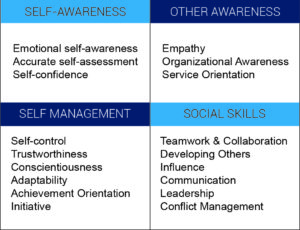 Daniel Goleman popularized the phrase “Emotional Intelligence” with the publication of his first book in the mid-90’s. His research showed that high performers had stronger relationship skills than average performers. Goleman has defined emotional intelligence or “EQ” as a collection of skills which fall into 4 quadrants below:
Daniel Goleman popularized the phrase “Emotional Intelligence” with the publication of his first book in the mid-90’s. His research showed that high performers had stronger relationship skills than average performers. Goleman has defined emotional intelligence or “EQ” as a collection of skills which fall into 4 quadrants below:
Research currently shows the relationship between these quadrants. Emotional Intelligence (EQ) begins in the Self-Awareness quadrant. The more self-aware someone is, the more they are able to be aware of others and or manage themselves. The last skills to develop are our Social Skills which are dependent upon the development of skills in the other 3 quadrants. Self-awareness is dependent upon the willingness to listen to feedback about yourself. Being willing to really listen and hear others is also a prerequisite for Emotional Intelligence (EQ). This is the heart of the art of people-whispering.
Emotional intelligence is a powerful component of effective leadership. It’s the ability to recognize and positively manage your own emotions as well as recognize and adapt to the emotions of others depending upon the needs of the other person(s) and the needs of the situation.
Emotional intelligence is more important than ever before given the continuous change in today’s restructured, down-sized, team-based, flatter, more virtual, and increasingly diverse workplace. A lack of emotional intelligence can lead to all kinds of organizational problems and missed opportunities. As problems such as territorialism, gossip, resisting change, false consensus, withholding information, cliques, hiding mistakes, cynicism, and more increase, levels of commitment and performance decrease.
We can design and develop tailored or customized programs in emotional and conversational intelligence to meet your unique needs. Our tailored solutions include and move beyond the fundamentals of emotional intelligence to include building trust, solving problems with conversational intelligence, facilitating change, and meeting employee’s unique needs. We specifically use Everything DiSC® Agile EQ™, from the Everything DiSC® Application Suite of Solutions® to assist your leaders in building and strengthening their emotional intelligence.
Depending upon your organization’s unique needs, tools such as Everything DiSC® Productive Conflict and Everything DiSC® Agile EQ™ will help you better understand and manage yourself. We’ll help your leaders to expand their leadership capacity to create an environment that fosters EQ.
 Developing leaders at all levels of an organization must involve developing their relationship skills and emotional intelligence as well as their technical competencies. People are often hired for their technical expertise but are fired or are unsuccessful due to their lack of emotional intelligence or negative attitudes. Whether we are cultivating the emotional intelligence in your organization through executive coaching, training, or consulting, you can expect the following benefits:
Developing leaders at all levels of an organization must involve developing their relationship skills and emotional intelligence as well as their technical competencies. People are often hired for their technical expertise but are fired or are unsuccessful due to their lack of emotional intelligence or negative attitudes. Whether we are cultivating the emotional intelligence in your organization through executive coaching, training, or consulting, you can expect the following benefits:
- A more agile workplace culture
- Higher engagement levels
- Talent retention and attraction
- Improved productivity
- Developed bench strength
- Improved conversational intelligence
Researchers and scientists are confirming what many of us have intuited or learned through observation and experience. That is, human beings are emotional and spiritual creatures first who can learn to manage and harness the power of their minds. Mind refers to more than just the brain. Instead, it refers to a person’s overall level of consciousness.
This knowledge can be expanded into a spiritual intelligence that goes far beyond traditional ideas of religion or dogma. Many people are doing excellent work in this arena including the quantum physicist Dana Zohar, scientist Dean Radin, Peter Senge and many others too numerous to mention.
Bringing it back to the world of business, Jim Collins became famous with the publication of his first book, Built to Last: Successful Habits of Visionary Companies co-authored with James Porras. The gist of their research is that truly great companies are visionary and values-driven. This aligns to Dr. Zohar’s work around Spiritual Intelligence or SQ. Researchers in the areas of neuroscience, accelerated learning, hypnotherapy, and consciousness research are further adding to our knowledge of how we can learn and evolve more consciously.
The implications for leadership are vital in today’s world. High IQ alone doesn’t guarantee a good leader. High EQ is important and it may not even be enough. Sustained and recognized greatness in any field or business including Corporate America is obtained by tapping into something deeper. If a leader is willing to know his or herself and his or her place in the universe, he or she can achieve what I call inspired success. Inspired success creates an environment which brings out the best in people such that employees, customers, and society all benefit.
Great leaders aren’t just their intellects or brains. They also use their hearts and souls as well as their minds. They understand the power of thoughts and emotions in creating results. Many teachers throughout the ages have expressed in various ways the fundamental truth that our thoughts create our feelings which create our behaviors and/or actions which then create our results.
Our approach is to assist people in becoming conscious of their own thinking and feeling patterns which stem from their values and beliefs and ultimately their needs. Behaviors are just the tip of the iceberg and a deeper understanding of what is beneath the surface can facilitate positive change and growth.
Communication, Collaboration & Productive Conflict
“Out beyond ideas of wrongdoing and right doing, there is a field. I will meet you there.”
— Rumi —
Organizations have always known that success depends upon people communicating effectively. Effective communication contributes to a positive performance environment which research shows contributes to bottom-line results. People-whisperers know that effective communication is about the quality of the connection between the senders and the receivers of the message. The strongest influence on the quality and outcome of any communication is the ability to truly listen effectively.
Listening is more than hearing. It is the ability to receive, attend to, interpret, and respond to verbal and nonverbal cues in ways that are appropriate to the purpose of the communication. It is estimated that people screen out or misunderstand the intended meaning or purpose of a message in over 70% of communications, making mismatched listening styles the biggest contributing factor to miscommunication.
Individual Report:
The Personal Listening Profile® offers personalized, narrative feedback to allow people to gain clarity and insight into their own listening behavior. The individual report highlights strengths and growth areas for each communication style and provides specific suggestions for communications skills improvement. The Profile also includes a Communication Gap Analysis, which is an at-a-glance look at how the respondent’s listening strengths and weaknesses relate to the intended message of the speaker. Another great feature is enhanced action planning, which encourages people to reflect on how their listening styles interact with that of others and helps them develop strategies for reducing miscommunication.
Facilitator Report:
The Personal Listening Profile Facilitator Report® gives you a heads up on group dynamics by showing you how group members use each Listening Approach. At a glance, you’ll see the similarities and differences within your group that can lead to miscommunication. You’ll also be able to identify those individuals whose scores fall outside of group averages and who may feel isolated or alienated by the dominant group culture.
The Personal Listening Profile® helps people to discover their preferred or most natural approach to listening as they gain insight into the different listening approaches of others. It also helps people to see that their preferred listening approach may not be appropriate to every situation. They learn when and how to adapt to another listening approach as the situation requires.
Clients have used the Personal Listening Profile® to:
- Enhance communication
- Strengthen customer relationships
- Improve management effectiveness
- Reduce destructive conflict
- Develop leaders
- Boost productivity
You have probably noticed that the rate of change and disruption in the world of business keeps accelerating year after year. Chances are, we are going to continue to live in a volatile, uncertain, complex and ambiguous world for some time. We can help you to navigate these changes by helping your people learn to more effectively communicate and collaborate.
Wiley’s Application Suite of Solutions® is now branded as The Culture Catalyst™. A catalyst is someone who makes change possible. A catalyst is an agent that provokes or speeds significant change or action. In today’s world, this catalyst must be a collaborative leader with the mindset, skill sets, and tool sets to facilitate a collaborative environment in their sphere of influence. For collaborative leadership to be successful, the leader must be able to:
- Facilitate and influence instead of just direct
- Provide a vision, step back, and assume a neutral position in the decision-making process
- Allow the group or team to explore an idea in-depth
- Let everyone have a say in the decision
The evidence is overwhelming that collaborative leadership is the most effective approach to leading in today’s VUCA (volatile, uncertain, complex, ambiguous) environment. Everything we do at our firm is to better equip your leaders and teams to have more trusting, collaborative relationships that enable not only design thinking but also real creativity and innovation. Whether we are proving training, coaching, or assessments such as Everything DiSC® Application Suite, The Five Behaviors®, or PXT Select™ and/or some combination of the above, we are committed to assisting you to succeed in the 21st century.
Most people think the word “conflict” is a dirty one conjuring up visions of mean-spirited arguments amidst the cubicles of Corporate America and international business. However, healthy productive conflict about ideas and issues is essential and necessary for productive teamwork, trust, creativity, and innovation.
Clients have called upon us to assist them in determining whether their leaders and teams are harboring some of the common myths about conflict that aren’t serving them or their teams. Utilizing the Everything DiSC® Productive Conflict assessment and training program developed by Wiley, clients learn to identify conflict-related behaviors that often show up in typical work-related situations. Most importantly, they learn practical strategies for what to do about them.
Productive Conflict is a rigorously researched-based training program which helps clients to discover how an individual’s DiSC style can affect how they behave in conflict. The ultimate result is helping people to become aware of and to transform their automatic negative thoughts which can lead to unhealthy behavioral reactions into healthy behavioral responses in conflict situations.
In short, participants harness the power of conflict by transforming destructive behavior into productive responses creating a more collaborative culture.
Change Management
“To exist is to change, to change is to mature, to mature is to go on creating oneself endlessly.”
— Henri Bergson —
In today’s business environment, change is a constant. Fortunately, individuals, teams, and organizations have a choice. You can choose to be controlled by and to be merely reactive to changes in the environment. Or you can choose to be proactive and manage the change process positively to maximize benefits and to reduce the negative impacts. Studies conducted about change and organizational life reveal sobering statistics. “Fewer than 20% of all change initiatives are really successful. More alarming still for top managers, a survey of 1,087 corporate directors reported in BusinessWeek, 31% of CEOs fired by their boards were removed because they mismanaged change; more than any other cause.”
From my experience, this is often related to a failure to pay attention to the human aspects of change. I was privileged to facilitate a program called “Navigating Through Change” for many Fortune 500 companies in the US and in Asia. I lived and breathed the metaphor of change and white-water rapids. What I observed was that many organizations view change management initiatives as a process to achieve some financial gains or goals for the organization. They view people as assets or resources that the organization owns or manages. At the most fundamental level, people ARE the organization and the organization is nothing but people. People manage the organization and not the other way around.
In other words, the problems are not “out there” but inside each one of us in terms of our thinking. We are not bad or wrong. Instead, we in the West have been trained in ineffective ways of thinking and relating through our schools, governmental, and religious institutions, through our families of origin, and so on. Within our organizations, we have spent many years learning how to systematize and control things and how to build hierarchies. Although we can tear down all the outdated hierarchies, they will reappear because no matter what we say at the behavioral level, we haven’t changed our beliefs about leadership and communication and personal power in the workplace.
Culture change starts with personal change. We become change agents by altering our own worldviews and recognizing the need to align and empower ourselves before successfully changing the organization. To create deep and sustainable change, we must go on the hero/heroines’ journey through uncertainty to find meaning and purpose.
We can assist you and your organization with training programs designed to help leaders engage people, raise morale, and change the corporate culture one leader at a time. Our approach inspires people to stop complaining and start collaborating. Workshops using our strategies for change management include the following topics:
- Understanding the nature of change in today’s global, cross-cultural, increasingly virtual, and internet-based world
- Recognizing the human reactions to change and developing the skills to address them
- Highlighting the role of communication in moving from fear to commitment
- Creating effective change management plans
- Leading change initiatives successfully
- Encouraging creativity and innovation throughout a change process
- Imbedding ongoing support skills
Today’s workplace demands high performance from everyone, but that fortunately no longer means putting work ahead of everything else. Today’s more dynamic, team-oriented organizations require flexible, creative, sustainable performance which can only be found with people who know how to design a life based upon conscious choices. No one today disputes the fact that stress, poorly managed, can lead to health, relationship, and financial problems to name a few.
There are many resources available today to increase personal and professional performance, fulfillment, and self-mastery. I have researched and personally experienced many transformational technologies that I recommend depending upon the unique needs of the individual, team, and organization I am serving.
One organization I recommend without hesitation is The Institute of HeartMath, an internationally recognized nonprofit research and education organization. HeartMath has been researching heart intelligence, stress and emotional management since 1991 and applies their findings to practical, easy-to-use tools that have been scientifically developed and tested. Check out their work at www.heartmath.org.
As an Executive Leadership and Life Coach, I encourage people to acknowledge their natural, normal reactions to change and where they are on the change curve. I ask people to identify their core values since remembering what matters most during stressful times is a quick way to shift one’s perceptions and physiology. Likewise, the people-whispering approach focuses on relationship-coping resources as the most effective and consistent way to respond positively to personal and professional change.
Creativity/Innovation
“Imagination is more important than knowledge. For knowledge is limited to all we now know and understand, while imagination embraces the entire world, and all there ever will be to know and understand.”
— Albert Einstein —
In today’s workplace, there are always concerns about the economy and possible disruptive technologies not to mention the unknown impact of forces such as globalization, competition, workforce diversity, and changes in value systems. We need to reexamine our long-held assumptions about competition and scarcity is order to thrive in our increasingly interdependent world.
You and your organization’s success will be determined by the ability to attract, mobilize, and retain human creative talent. In a world with artificial intelligence, human and emotional intelligence will become more important than ever.
New strategies are required for businesses to continue to be viable and there is a growing recognition of the importance of creativity and innovation for business and society. In recent years, there has been much discussion in the Western media about the “creative economy” and the importance of the “creative class.”
Richard Florida published a series of books on this identified “creative class” and their upcoming importance. Bill Gates has spoken at the World Economic Forum on the need for “creative capitalism” as a solution to the world’s problems. Lynne Twist has an excellent related book entitled The Soul of Money. Regardless, many influential and leading-edge thinkers believe that being creative and inventive will be the key to business success in the 21st century.
The new world of work is requiring all of us to think and act in radical ways to create and implement creative solutions more collaboratively and more quickly than ever before. Have you ever doubted your own capacity for creativity and innovation? Have you ever had challenges in eliciting creative solutions from your team? If so, Laura and her team of associates can help.
We can assist you in moving beyond relying upon yesterday’s ideas, products, and assumptions which can cause your company to fail and be a detriment to your career. Our training will encourage you and your team to utilize proven techniques to generate ideas and to establish a climate of innovation. Creative leaders are on the lookout for imaginative ways to influence people to achieve their vision and harness their organization’s creative energy. Through examples and interactive, experiential exercises, you will learn guidelines for collaboration, improvisation, and reflection.
Other learning tools and assessments that may be a part of your organization’s solution include the Team Dimensions Profile®, The Five Behaviors® of a Cohesive Team and The Five Behaviors® Personal Development Profile. Depending upon your needs, we can also incorporate relevant concepts and practices from multidisciplinary fields as diverse as the findings of neuroscience researchers to the work of Leonardo DaVinci. A high-level overview of why this relates to speaking, training and facilitation, and coaching is outlined later in this section.
Our custom and tailored training and coaching programs will allow you and your team to:
- Generate ideas and solutions using leading-edge creative methods
- Turn existing problems into opportunities for growth
- Discover new techniques for creating buy-in to new ideas
- Apply innovation techniques to improve systems, products, and processes
- Enhance morale, team performance, and collaboration
The good news for all of us in the world of coaching and training or human growth and development is that intelligence is not an immutable thing fixed at birth. Neuroscientists readily embrace the concept of neuroplasticity today. Neuroplasticity refers to the changes that occur in the organization of the brain as a result of experience. The concept challenges the mechanistic idea that each brain function has a particular location that is hard-wired from birth and the related idea that human nature is, to a large extent, fixed and unchangeable. According to the theory of neuroplasticity, thinking, learning, and acting actually change the brain’s anatomy.
This has profound implications for learning and education in all contexts especially leadership and team development, sales training, and change management. For that matter, all of the content areas outlined on this website that we address are affected by a knowledge of the potential for human growth and development. While individuals are endowed genetically and otherwise with more or less talent in a given area, numerous research studies show that IQ scores can be raised significantly through appropriate training. Even before Daniel Goleman’s work on emotional intelligence became well-known, it has become widely accepted that there are multiple intelligences.
In other words, the verbal and mathematical reasoning skills measured by IQ tests (and SATs) are not the only measures of intelligence by any means. In his modern classic, “Frames of Mind (1983)”, psychologist Howard Gardner posited the theory that each of us possesses at least seven measurable intelligences as follows:
- Logical-Mathematical – Stephen Hawking, Isaac Newton, Marie Curie
- Verbal-Linguistic – William Shakespeare, Emily Dickenson, Jorge Luis Borges
- Spatial-Mechanical – Michelangelo, Georgia O’Keefe, Buckminster Fuller
- Musical – Mozart, George Gershwin, Ella Fitzgerald
- Bodily-Kinesthetic – Muhammad Ali, F. M. Alexander
- Interpersonal-Social – Nelson Mandela, Mahatma Gandhi
- Intrapersonal (Self-knowledge) – Viktor Frankl, Thich Nhat Hanh, Mother Teresa
In short, we haven’t begun to tap the resources that are available to us personally and professionally. As we expand our repertoire, we can begin to make a bigger difference with less effort. In a similar vein, we can learn much from the great thinkers and creators. Leonardo da Vinci was one of the great geniuses we can model. Leonardo was innovative as well as productive. Being both is often our challenge in organizational life.
In his wonderful book, How to Think like Leonardo da Vinci, Michael Gelb outlines the Seven Da Vincian Principles which are:
- Curiosità – an insatiably curious approach to life and an unrelenting quest for continuous learning.
- Dimostrazione – a commitment to test knowledge through experience, persistence, and a willingness to learn from mistakes.
- Sensazione – the continual refinement of the senses, especially sight, as the means to enliven experience.
- Sfumato – a willingness to embrace ambiguity, paradox, and uncertainty.
- Arte/Scienza – the development of the balance between science and art, logic, and imagination. “Whole-brain” thinking.
- Corporalita – the cultivation of grace, ambidexterity, fitness, and poise.
- Connessione – a recognition and appreciation for the interconnectedness of all things and phenomena. Systems thinking.
Using Howard Gardner’s work on multiple intelligences and Gelb’s work on Leonardo da Vinci’s genius plus many other sources of wisdom in this burgeoning field, we can help you to bridge the people-whispering gap between theory and practical application.
Consultative Selling
“The true measure of a man is how he treats someone who can do him absolutely no good.”
— Samuel Johnson —
As a result of societal and technological changes, salespeople today must be more agile than ever before. Rapidly expanding global markets have created more choices for customers and clients who now have higher expectations. The loyal, predictable customer is a thing of the past. In an era of mass customization where customers want solutions tailored explicitly to their situations, it is more important than ever before to be consultative in your approach to the sales process.
Many sales experts and motivational speakers have said that there are three unconscious questions people have when they meet others. They are:
1. Can I trust you?
2. Do I like you?
3. Do you care about me?
Another way to frame this is to say, people do business with people they know, like, and trust. Even in the world of internet marketing, relationships and emotions are still the driving force behind why people buy from you or not. For more on the power of relationships in the selling process, please click here to read my article on “The Art of People-Whispering.”
Laura A. Davis & Associates, Inc. can assist your sales people and sales teams to improve their productivity and sales results with Everything DiSC® Sales.
The Everything DiSC® Sales teaches participants to read and adapt to the styles of their customers. This results in the ability to better connect with customers at each stage of the sales process resulting in greater trust and more sales. The course format allows you to create sales-specific, personalized content for an in-depth learning experience. A modular design and online tailoring features allow you to design a customized program for your needs.
